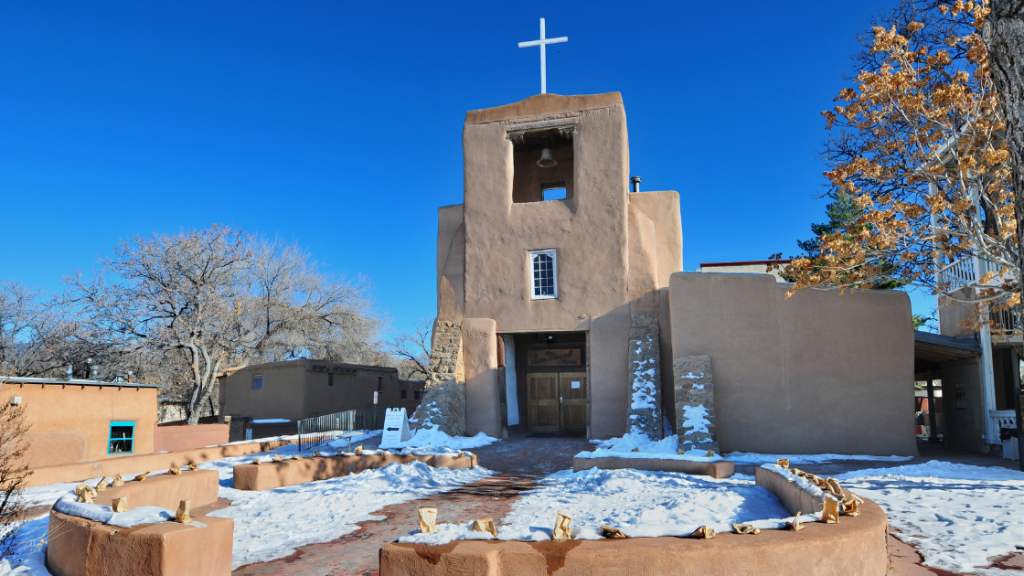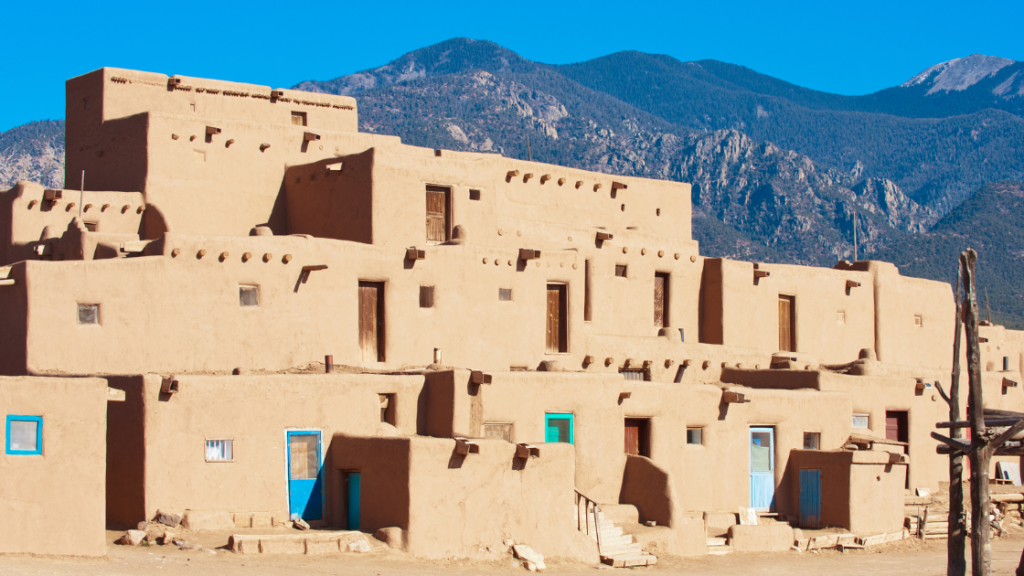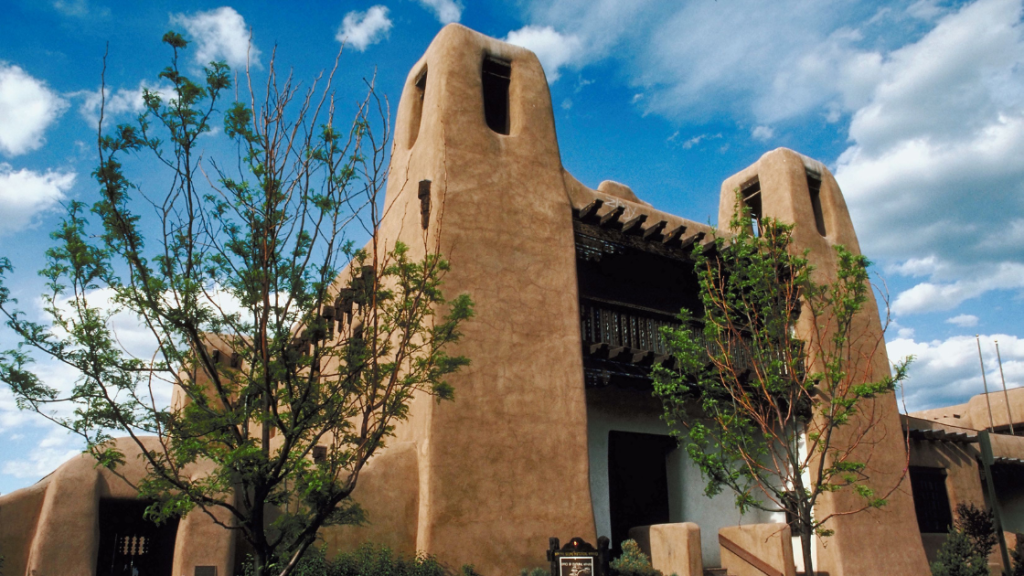The History of Santa Fe’s Adobe Architecture and Its Enduring Legacy
Walk the streets of Santa Fe, and it feels like stepping back in time. The warm, earthy tones of adobe buildings blend seamlessly with the desert landscape, exuding a timeless charm.
Many of these structures look as though they’ve weathered centuries of history, and in many cases, they truly have. Adobe isn’t just a building material here; it’s a symbol of survival, ingenuity, and cultural identity. It weaves together Indigenous knowledge, colonial influence, and the spirit of Santa Fe itself.
This blog will take you on a journey through adobe’s beginnings with the Pueblo peoples, its transformation during Spanish colonization, its revival in the early 20th century, and its lasting impact today. Exploring these layers will uncover how adobe architecture tells the story of this remarkable region.
Where It All Started: Indigenous Roots and Early Use
Long Before Colonizers: Pueblo Architecture
Long before Europeans arrived, the Pueblo peoples mastered a building technique perfectly suited to the arid climate of the Southwest. Using a mixture of earth, water, and straw (dried and hardened under the sun), they created sturdy adobe homes that could withstand the elements.
These structures were not just practical but deeply tied to their community-focused way of life. Pueblos were typically multi-story complexes, often constructed into natural landscapes like cliffs or mesas, emphasizing sustainability and resourcefulness.
Take Taos Pueblo, for instance. It’s a UNESCO World Heritage Site and a living representation of this tradition. Its adobe walls have sheltered generations for over 1,000 years, reflecting a deep respect for the land and resources. The communal nature of these pueblos embodied shared values of harmony, cooperation, and living lightly on the earth.
The Spanish Arrive: How Colonization Shaped Adobe’s Role
Blending Traditions
When Spanish settlers arrived in the early 1600s, they quickly recognized the practicality of adobe, adapting it to their own architectural needs. Material availability and the sometimes-harsh climate made adobe a natural fit.
These settlers introduced modifications to local techniques, incorporating flat roofs, wooden beams called vigas, and central courtyards that reflected their Mediterranean heritage.

Adobe was soon used not just for homes but also for public and religious buildings, such as the San Miguel Chapel, often referred to as the oldest church in the United States.
Architectural Legacy of the 1600s–1800s
During the colonial period, adobe became the foundation of Santa Fe’s town planning, which began in 1610. The heart of the city, the Plaza, was surrounded by these hybrid architectural styles, blending Spanish and Indigenous influences into something entirely unique.
The structures built during this era were efficient, beautiful, and reflective of a cultural crossroads. This enduring aesthetic has become a defining feature of Santa Fe’s identity.
Revival and Reinvention: The Pueblo Revival Movement
Early 20th-Century Romanticism
By the early 1900s, artists, writers, and architects flocking to Santa Fe became enchanted by its adobe structures. Far from viewing them as relics of the past, they saw an opportunity for preservation and reinvention.

Movements like the Pueblo Revival embraced the soft, rounded edges of adobe walls, timber accents, and stucco finishes that mimicked traditional forms. What emerged was a fusion of historic influence and modern romanticism, designed to evoke a sense of place while celebrating the city’s Indigenous and colonial heritage.
Institutionalization Through Zoning and Civic Pride
The defining moment for adobe’s modern legacy came in 1957 with the Santa Fe Historic Zoning Ordinance. The city declared that its core must preserve its appearance, mandating Pueblo Revival or Territorial styles for buildings in key areas.
This ordinance guaranteed that even commercial establishments, from restaurants to chain stores, would adhere to the visual language of adobe. It wasn’t just preservation; it was pride in identity, ensuring that Santa Fe retained its distinct architectural character for generations.
The Practical Beauty of Adobe Today
Still Functional, Still Local
It’s easy to admire adobe for its beauty, but its functionality is equally impressive. Thanks to its natural insulating properties, adobe homes stay cool during blazing summer days and warm on chilly desert nights. It’s still a favorite for sustainable construction, as it uses local, eco-friendly materials and promotes energy efficiency.
Of course, maintaining adobe has its challenges. It requires regular upkeep, like re-plastering to protect it from erosion, but for many, the benefits far outweigh the effort.
Where to See It

If you’re in Santa Fe, there’s no shortage of places to experience adobe’s enduring legacy. Stop by the San Miguel Chapel, marvel at the New Mexico Museum of Art, or wander Canyon Road to spot galleries and homes that embody these age-old techniques.
To deepen your understanding, consider joining a self-guided walking tour or reaching out to a preservation society for recommendations.
What Adobe Says About Santa Fe
All across Santa Fe, adobe architecture stands as a visible thread connecting the past to the present. These sun-baked walls tell stories of resilience, adaptation, and a profound respect for this land and its people.
Beyond being a structural style, adobe reflects layers of cultural meaning and history. It invites you to look closer with every corner turned, to see not just homes and buildings, but a story written in earth and time.
Discover the stories for yourself. Plan your visit to Santa Fe today!
